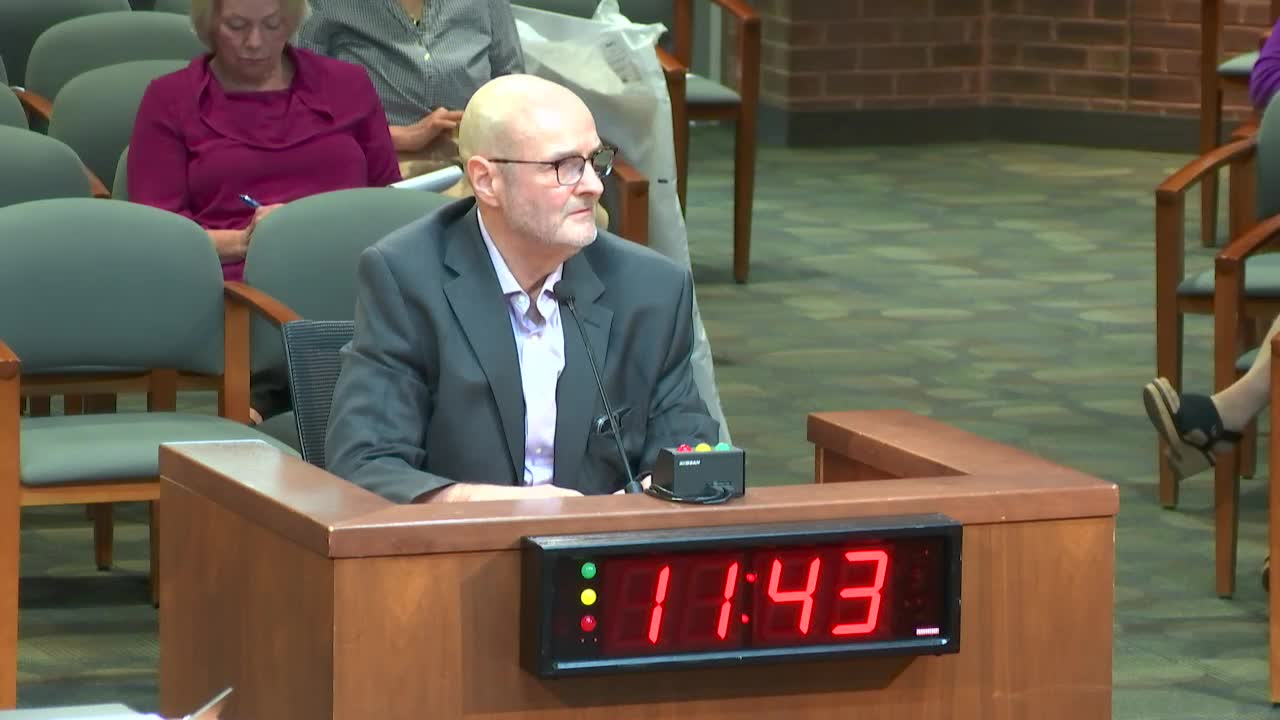Engineer Robert Vogel testifies on 40 years of Howard County zoning expertise
April 29, 2025 | Howard County, Maryland
This article was created by AI summarizing key points discussed. AI makes mistakes, so for full details and context, please refer to the video of the full meeting. Please report any errors so we can fix them. Report an error »

In a recent government meeting held in Howard County, Maryland, discussions centered around the implementation of a new facility that utilizes advanced thermal oxidizer technology. The meeting, which took place on April 29, 2025, featured a detailed examination of the facility's operations and its environmental implications.
As representatives from the facility addressed the council, they clarified that the new system would significantly differ from older operations that had been in place for decades. The facility's spokesperson explained that while previous machinery primarily produced liquid outputs, the new implementation would focus on a more efficient process that converts gases into carbon dioxide (CO2) and water. This shift is expected to reduce emissions compared to past operations, particularly in terms of CO2 output.
The thermal oxidizer, a key component of the new facility, operates at high temperatures—around 1,400 degrees Fahrenheit—ensuring that harmful nitrogen oxides (NOx) are not produced during the process. The spokesperson emphasized that the system is designed to achieve a 99.99% efficiency rate, which is a significant improvement over older technologies.
However, questions arose regarding the specifics of emissions and operational capacities. Some council members sought clarity on the potential for aerosolized materials and other organic compounds being vented into the atmosphere. The facility representatives acknowledged that while they conduct testing that may involve venting, the new system is expected to emit less CO2 than previous operations.
As the meeting progressed, the council members expressed concerns about the worst-case scenarios associated with the new facility's operations. The spokesperson admitted uncertainty about when such scenarios might occur, highlighting the complexities involved in predicting operational outputs.
The discussions underscored the balance between advancing technology and environmental responsibility. As Howard County moves forward with this new facility, the implications for local air quality and emissions standards remain a focal point for both the council and the community. The meeting concluded with a commitment to ongoing dialogue about the facility's impact and the importance of transparency in environmental matters.
As representatives from the facility addressed the council, they clarified that the new system would significantly differ from older operations that had been in place for decades. The facility's spokesperson explained that while previous machinery primarily produced liquid outputs, the new implementation would focus on a more efficient process that converts gases into carbon dioxide (CO2) and water. This shift is expected to reduce emissions compared to past operations, particularly in terms of CO2 output.
The thermal oxidizer, a key component of the new facility, operates at high temperatures—around 1,400 degrees Fahrenheit—ensuring that harmful nitrogen oxides (NOx) are not produced during the process. The spokesperson emphasized that the system is designed to achieve a 99.99% efficiency rate, which is a significant improvement over older technologies.
However, questions arose regarding the specifics of emissions and operational capacities. Some council members sought clarity on the potential for aerosolized materials and other organic compounds being vented into the atmosphere. The facility representatives acknowledged that while they conduct testing that may involve venting, the new system is expected to emit less CO2 than previous operations.
As the meeting progressed, the council members expressed concerns about the worst-case scenarios associated with the new facility's operations. The spokesperson admitted uncertainty about when such scenarios might occur, highlighting the complexities involved in predicting operational outputs.
The discussions underscored the balance between advancing technology and environmental responsibility. As Howard County moves forward with this new facility, the implications for local air quality and emissions standards remain a focal point for both the council and the community. The meeting concluded with a commitment to ongoing dialogue about the facility's impact and the importance of transparency in environmental matters.
View full meeting
This article is based on a recent meeting—watch the full video and explore the complete transcript for deeper insights into the discussion.
View full meeting
